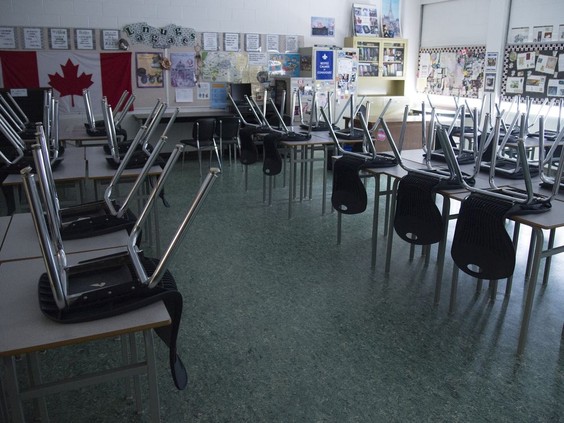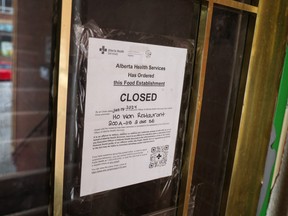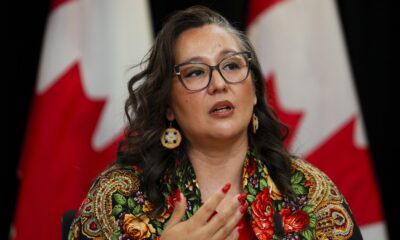Education
Teachers’ Contract Talks Spark Uncertainty for Students and Parents

Parents are facing uncertainty as the new school year approaches in Alberta, with teachers currently engaged in contract negotiations. The deadline for schools to resume is approaching, and parents are left pondering whether their children will start classes as scheduled next week. Concerns extend to the potential for sports, planned field trips, and lunch-hour supervision, all of which are now in question due to ongoing negotiations.
In May, teachers rejected a mediated settlement recommended by the Alberta Teachers’ Association (ATA). Following this, a strike vote was held and passed in early June. Teachers are now within a 120-day period to provide a 72-hour strike notice, leaving parents anxious throughout the summer about what September will bring. Many parents are especially concerned about the implications of a strike, recalling the significant learning loss experienced during the COVID-19 shutdowns between 2020 and 2022.
Previous strikes in Alberta serve as a stark reminder of the potential disruptions. In February 2002, students missed nearly three weeks of school, while a strike in British Columbia in 2014 lasted more than five months, causing students to miss the first two weeks of the 2014-15 academic year. As negotiations continue this week, many parents are left hoping for a swift resolution, but the timeline for reaching an agreement is tight.
In light of these uncertainties, parents are increasingly exploring alternative education options. In the 2023-24 school year, home education saw a substantial increase of 16 percent, and the independent school population rose by 10.5 percent. Charter school enrolment also surged by 17 percent in the 2024-25 academic year. This growing interest in alternative educational pathways reflects a desire for stability amid the threat of strikes or other disruptions.
The aftermath of the 2014 teachers’ strike in British Columbia illustrates this trend, as independent school enrolment increased by nearly 7 percent, significantly higher than in a typical year. A diversified educational ecosystem could serve to protect students’ interests during such tumultuous times. Offering more choices empowers families to select educational settings that best fit their children’s needs, potentially leading to greater academic success and personal growth.
The existence of alternative schools outside the public system not only benefits individual families but also contributes to a more resilient educational landscape. With a variety of options available, families can navigate disruptions with greater ease, thereby reducing the overall impact of the strike risks for all students.
As the situation unfolds, the focus remains on reaching a resolution that allows students to return to school without interruption. The outcome of these negotiations will have lasting effects on the educational landscape in Alberta and beyond.
-

 Politics4 weeks ago
Politics4 weeks agoSecwepemc First Nation Seeks Aboriginal Title Over Kamloops Area
-

 World5 months ago
World5 months agoScientists Unearth Ancient Antarctic Ice to Unlock Climate Secrets
-

 Entertainment5 months ago
Entertainment5 months agoTrump and McCormick to Announce $70 Billion Energy Investments
-

 Science5 months ago
Science5 months agoFour Astronauts Return to Earth After International Space Station Mission
-

 Lifestyle5 months ago
Lifestyle5 months agoTransLink Launches Food Truck Program to Boost Revenue in Vancouver
-

 Technology3 months ago
Technology3 months agoApple Notes Enhances Functionality with Markdown Support in macOS 26
-

 Lifestyle3 months ago
Lifestyle3 months agoManitoba’s Burger Champion Shines Again Amid Dining Innovations
-

 Top Stories2 months ago
Top Stories2 months agoUrgent Update: Fatal Crash on Highway 99 Claims Life of Pitt Meadows Man
-

 Politics4 months ago
Politics4 months agoUkrainian Tennis Star Elina Svitolina Faces Death Threats Online
-

 Sports5 months ago
Sports5 months agoSearch Underway for Missing Hunter Amid Hokkaido Bear Emergency
-

 Politics5 months ago
Politics5 months agoCarney Engages First Nations Leaders at Development Law Summit
-

 Technology5 months ago
Technology5 months agoFrosthaven Launches Early Access on July 31, 2025





















